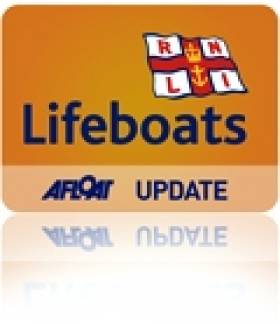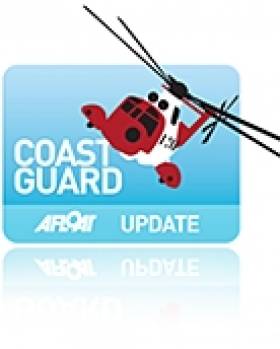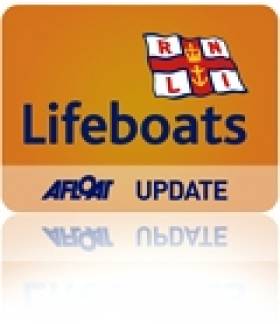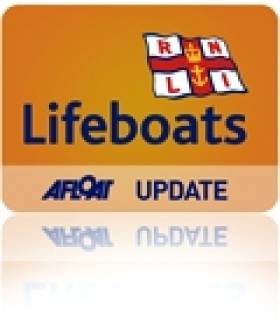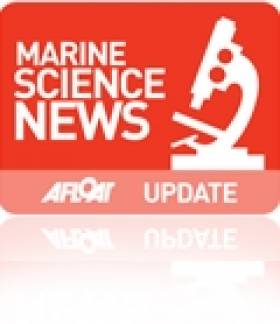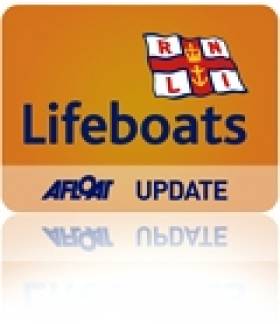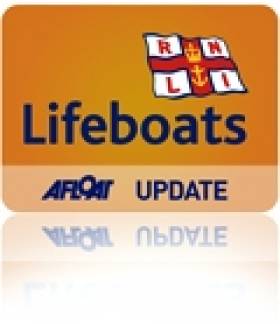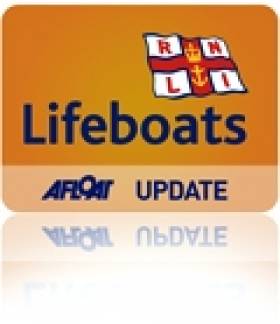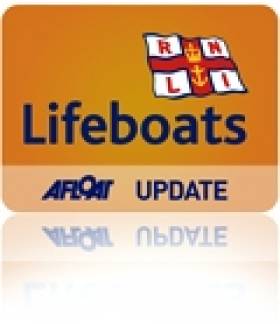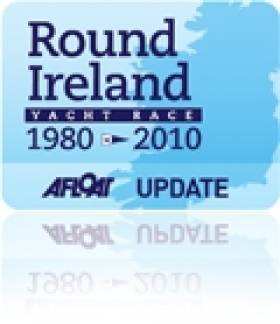Displaying items by tag: RNLI
Lifeboat Towing Yacht to Ballycotton Harbour
Ballycotton RNLI lifeboat launched this evening at 17:15 to lend assistance to a 31 ft. yacht who sought assistance 4 miles east of Ballycotton in East Cork. The lifeboat arrived on-scene and established a towline at 17:50. The Irish registered yacht, with four persons aboard, is under tow to Ballycotton harbour. They are expected to arrive at approx. 18:45.
Overdue Divers Rescued by Coastguard Helicopter
Liverpool Coastguard received a '999' call at 12:30 pm from the dive boat informing them of the situation and requesting assistance after two divers had not resurfaced and were last seen at 12 noon.
Drumore Coastguard Rescue team was tasked and the Portpatrick and Stranraer, RNLI lifeboats were requested to launch as well as the independent Port William inshore rescue boat. A Rescue helicopter from Prestwick was scrambled to the scene. The vessel 'Go West' assisted in the search.
Paul Campbell, Watch Officer, Liverpool Maritime and Rescue Coordination Centre, said:
"Once the casualty vessel was located the search and rescue units on scene carried out a search around the Mull of Galloway Lighthouse with the Rescue helicopter locating the two casualties and winching them to safety."
The Coastguard always advises divers to let the Coastguard know where and when you will be diving. Always keep a close eye on the weather and sea conditions and make personal fitness a top priority for safe diving. Familiarise yourself with new or different gear before diving and ensure that you dive within your limits.
At 5.45pm yesterday evening Monday July 5th, Fenit RNLI Lifeboat launched to assist a 40 foot Catamaran which was taking on water. The vessel which had left Donegal en route to France was 20 miles west of Loop Head and there were 2 people on board.
On arriving at the location of the stricken vessel volunteer crew members with Fenit RNLI Lifeboat immediately boarded the catamaran with a salvage pump and proceeded to pump the water from the vessel. Once they were happy that this process was working satisfactorily they put the vessel on tow and proceeded towards Fenit.
On arrival back in Fenit just before 1am this morning, arrangements were in place by Fenit RNLI members on shore and the catamaran was lifted onto the Pier by the Fenit Harbour Board Crane.
iPhone Co-Ordinates Save Stricken Vessel
A stricken vessel was located in trouble on Lough Erne using lat/long data from an iPhone.
A 999 call from the Motor Cruiser ‘Wee Rascal’ on Lough Erne in the early hours of this morning called on all the investigative powers of Belfast Coastguard as the vessel wasn’t even close to its reported position.
The vessel was on passage from Kesh to Enniskillen in windy, wet conditions when it called 999 to ask for assistance. Despite an extensive search of the area around its reported position neither the Enniskillen RNLI Inshore Lifeboat nor Erne Coastguard Rescue Teams could find the vessel.
Because the vessel had no flares, flash lights or VHF Radio on board to show rescuers where it was, Belfast Coastguard resorted to mobile phone technology. A locator i-phone application finally gave rescuers the vital latitude and longitude they needed to locate the vessel
The vessel was finally located 25 miles away from its reported position, dangerously amongst the rocky shoreline off Eagle Point. It was carefully brought away from the rocks by the skill of the Enniskillen RNLI Inshore Lifeboat crew and taken to the safety of Beleek marina.
Coastguard Watch Manager Steven Carson said:
“A combination of luck and technology saved these four people from imminent danger this morning. They had charts onboard but obviously no real idea of how to get to their destination or how to report their position in an emergency.
“Vital hours were wasted eliminating one possible location after another, time that we wouldn’t have had if the vessel had struck the rocks and sunk. I hope that this experience will help the crew to realise why navigation training is essential for all mariners, whether you’re on a Lough or the open sea.”
The Marine Institute is having a Summer Fête – Family Fun Pirate Day at its headquarters, Rinville, Oranmore on Sunday 11th July from 1.00 pm to 5.30 pm in aid of Galway Lifeboat. Admission is free.The fun day offers a great opportunity to meet friends, enjoy a range of cakes, tasty treats and a sausage sizzle courtesy of the Harbour Hotel, Kylemore Abbey and Compass Catering, while listening to live music overlooking Galway Bay. There will be items to purchase and a range of activities for all the family including face painting, cartoon classes, magic show, bouncy castles, art & crafts, marine displays and lots more fun activities and games."Since many of our staff go to sea on research surveys we appreciate the work done by the Galway Lifeboat and are anxious to help in any way we can," said Marine Institute CEO Dr. Peter Heffernan. "The event promises to be a fun-packed day for adults and children alike - particularly those who are interested in learning more about the work of the Marine Institute and the marine community in Galway".For those interested in viewing the architecture of the Institute's award winning building, tours will be available throughout the afternoon.The Marine Institute wishes to thank all of the exhibitors, sponsors and contributors taking part in the Summer Fête in aid of the Galway Lifeboats Ireland.All proceeds from the day will go to Galway Lifeboats.Further information is available on the Marine Institute's web site at www.marine.ie
The Marine Institute is having a Summer Fête – Family Fun Pirate Day at its headquarters, Rinville, Oranmore on Sunday 11th July from 1.00 pm to 5.30 pm in aid of Galway Lifeboat. Admission is free.
The fun day offers a great opportunity to meet friends, enjoy a range of cakes, tasty treats and a sausage sizzle courtesy of the Harbour Hotel, Kylemore Abbey and Compass Catering, while listening to live music overlooking Galway Bay. There will be items to purchase and a range of activities for all the family including face painting, cartoon classes, magic show, bouncy castles, art & crafts, marine displays and lots more fun activities and games.
"Since many of our staff go to sea on research surveys we appreciate the work done by the Galway Lifeboat and are anxious to help in any way we can," said Marine Institute CEO Dr. Peter Heffernan. "The event promises to be a fun-packed day for adults and children alike - particularly those who are interested in learning more about the work of the Marine Institute and the marine community in Galway".
For those interested in viewing the architecture of the Institute's award winning building, tours will be available throughout the afternoon.
The Marine Institute wishes to thank all of the exhibitors, sponsors and contributors taking part in the Summer Fête in aid of the Galway Lifeboats Ireland.
All proceeds from the day will go to Galway Lifeboats.
Further information is available on the Marine Institute's web site at www.marine.ie
Members of Ballyglass RNLI responded to an emergency callout yesterday (Sunday 20 June 2010) afternoon for a man reported missing after he went swimming in a remote mountain lake outside Bangor Erris in County Mayo. The volunteer lifeboat crew were unable to take their inshore lifeboat inland to the lake as the location was extremely remote but they are trained in search and rescue techniques and were called on to assist.
The request for help was received by Ballyglass RNLI Coxswain JT Gaughan from the Gardai at 4.10pm yesterday (Sunday 20 June 2010) when the girlfriend of the man reported him missing after he had gone for a swim in Stoney Lake. The mountain lake is three miles from the nearest road and in very rough terrain. The lifeboat crew along with the Gardai, Belmullet Sub Aqua Club, the Coast Guard and members of the North Western Regional fisheries board immediately went to give assistance.
Due to the remote access of the lake the Irish Coast Guard helicopter carried the search and rescue teams as near to the location as it could safely land and a search of the lake commenced. The search was called off at 10.30pm and was resumed first thing this morning. A man was recovered at approximately 10am and pronounced dead at the scene. His body has been taken to Castlebar hospital.
Commenting on the callout Ballyglass RNLI Coxswain JT Gaughan said, "this was a very sad and difficult callout for all involved. Everyone in the community and the various search and rescue agencies worked together in extremely challenging conditions to search for the young man. Our condolences go out to his family and friends."
Man Found Safe and Well
The man whom had been thought missing near Baltimore in West Cork has been located safe and well. All rescue services have been stood down. It is a reminder of the importance of letting people know where you are and where you are going.
Baltimore Lifeboat Search for Missing Man
The RNLI Inshore Lifeboat Bessie was called to assist in a search for a man who failed to make a pre-arranged meeting with a friend in Baltimore yesterday. The man had been camping on the Islands of Roaring Water Bay, and had left his Jeep in Baltimore. When the alert was raised at 20:18, it was unclear where the man might have been intending to stay that night. A search was initiated by Helmsman John Kearney and crewmen Micheal Cottrell and Paul O’Driscoll extending from Barlogue Creek at the mouth of Lough Hyne and into Roaring Water Bay. The Schull inshore lifeboat and the Coast guard helicopter were also involved in the search. The search was stood down last night as darkness fell and recommenced this morning at 05:15 with Helmsman Kieran Collins and crewmen Ronan Sheehy and Jim Baker on board the RNLI inshore lifeboat Bessie.
Both Baltimore Lifeboats Launch on Rescue Missions
Both the all-weather lifeboat and inshore lifeboat based in Baltimore Harbour were called to give assistance on Saturday evening 19th June.
The inshore lifeboat Bessie was called at 18:45 to standby a 58ft motor yacht that was disabled and adrift in Glandore Harbour having hit a rock. Helmsman Youen Jacob assisted by crewmen Kieran Collins and Diarmuid Collins stoody by alongside the Courtmacsherry lifeboat as the motor yacht was towed to safety in Union Hall.
The inshore lifeboat has just been returned to its compound on the pier, when a second alert was raised at 22.25. This time the all-weather lifeboat Hilda Jarrett, responded to a medical emergency on Cape Clear Island. The Public Health Nurse stabilised the casualty prior to the young man being taken on board at North Harbour on Cape Clear Island.. The ambulance service met the lifeboat on its return to Baltimore to transfer the casualty to hospital. The lifeboat was returned to base at 00.10 on Sunday morning. Coxswain Kieran Cotter, was assisted by his crew of Micheal Cottrell, Don O’Donovan, Diarmuid Collins, Brian Ormond, Simon Duggan and John O’Flynn. Remarkably Baltimore lifeboats newest recruit, Diarmuid Collins, attended at both calls.
These two incidents demonstrate the versatility of the RNLI lifeboat capacity at Baltimore. The inshore lifeboat is a twin engine Atlantic 75 RIB, purpose designed for rapid response to inshore emergencies, whilst the larger all-weather lifeboat is suited to long range calls and medical evacuations.
Lifeboat Man Goes Round Ireland
Wicklow RNLI crewmember Brian Sinnott is to compete in the 2010 Round Ireland Yacht Race on Sunday. The lifeboat volunteer is one of 15 young people who will crew the yacht Pride of Wicklow in the race around the Irish coast. Which starts at Midday on Sunday 20th July in Wicklow bay. Lifeboat mascot Stormy Stan joined Brian at the East pier on Thursday evening to wish him the best of luck on behalf of the crew in the 704 mile race.
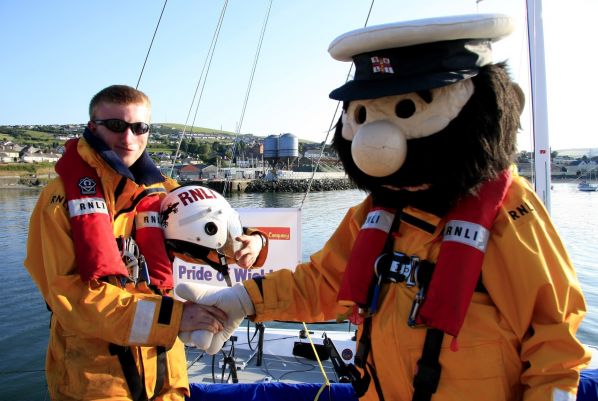
More on the Round Ireland Yacht Race:
Round Ireland Yacht Race 2010 Review
Round Ireland Yacht Race, Ireland's top offshore fixture
A Round up of 80 stories on the 2010 Round Ireland Yacht Race

























